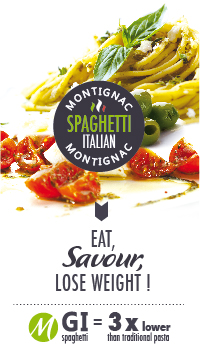By Michel Montignac
Quinoa
Totally unknown in the West up until the 1990s, quinoa is now to be found in all organic and natural food stores. It is an essential ingredient of the Montignac Method thanks to its extremely low Glycemic Index.
Quinoa is inaccurately classified as a cereal. Even if at a nutritional level it resembles cereals, quinoa has the advantage that it does not contain gluten. Quinoa in fact belongs to the leafy vegetable family (like spinach) and both its grains and leaves are edible.
This plant comes to us from South America. History tells that it was the Incas’ staple diet. They called it “The Mother Grain”.
It was traditionally cultivated through terrace farming in the Andean region in Bolivia, Peru and Colombia. Currently, other Latin American countries also cultivate quinoa.
At a dietary level, quinoa is exceptionally nutritious:
|
100 g of raw quinoa supplies : |
|||
|
Proteins Lipids Carbohydrates Fibers Minerals and humidity |
15 g 6 g 69 g 6 g 4 g |
Calcium Iron Potassium Phosphorus Zinc Magnesium Thiamine Riboflavin |
60 mg 9 mg 740 mg 410 mg 3.3 mg 210 mg 0.2 mg 0.4 mg |
There is only one variety of quinoa which can possibly be eaten as is in grain form or which can be ground into flour.
Quinoa can be served to accompany a meat or fish dish. It can serve as a substitute for rice in meals when following the protein-lipid diet in phase I.
It is a particularly good choice as an entrée either on its own or in taboulé substituting for semolina. I can also be served in a tossed or mixed salad.
It is always advisable to rinse the quinoa prior to cooking so as to eliminate possible residues of saponin, a natural insecticide which coats the grain protecting it from preying birds and insects.
Cook the quinoa in two 2 cups of water per cup of quinoa for approximately 10 minutes. Quinoa can also be browned in a spoonful of olive oil for 4 to 5 minutes before boiling.
Exclusive food stores sell ready-made quinoa dishes, quinoa flakes and quinoa flour foodstuff such as pasta as well as quinoa sprouts.
Quinoa has existed for centuries (5000 B.C.) Considering its exceptional nutritious value, as well as its beneficially low Glycemic Index, it can well be considered one of the foods of the future.
Top of page




